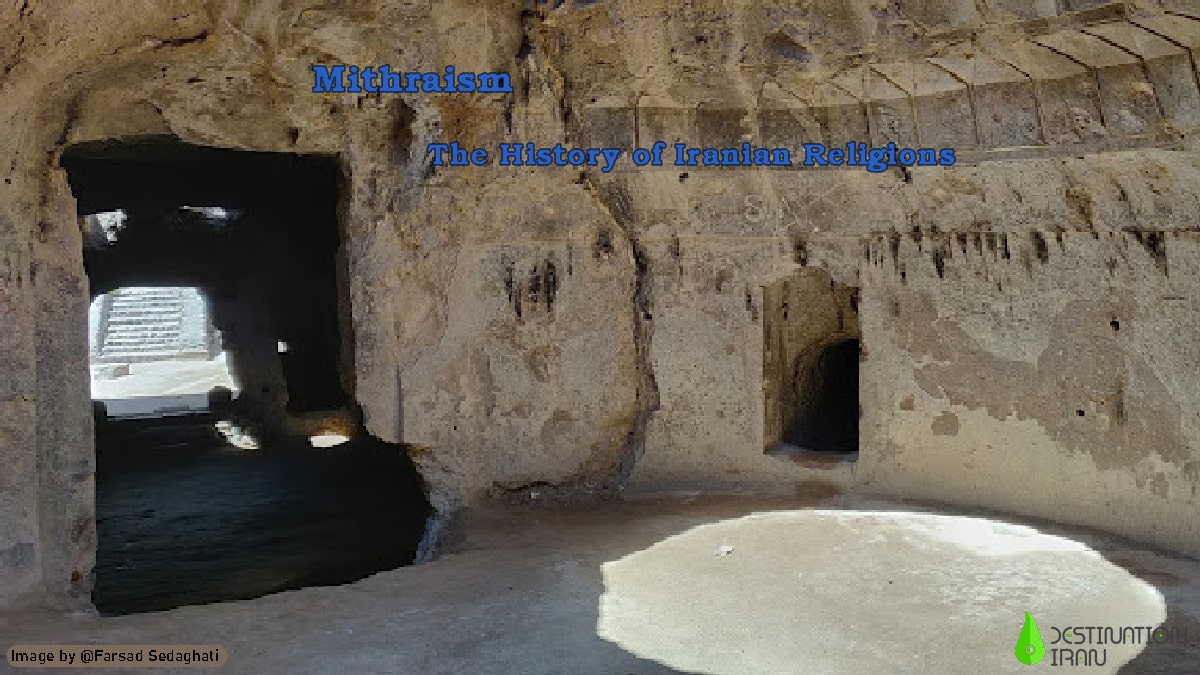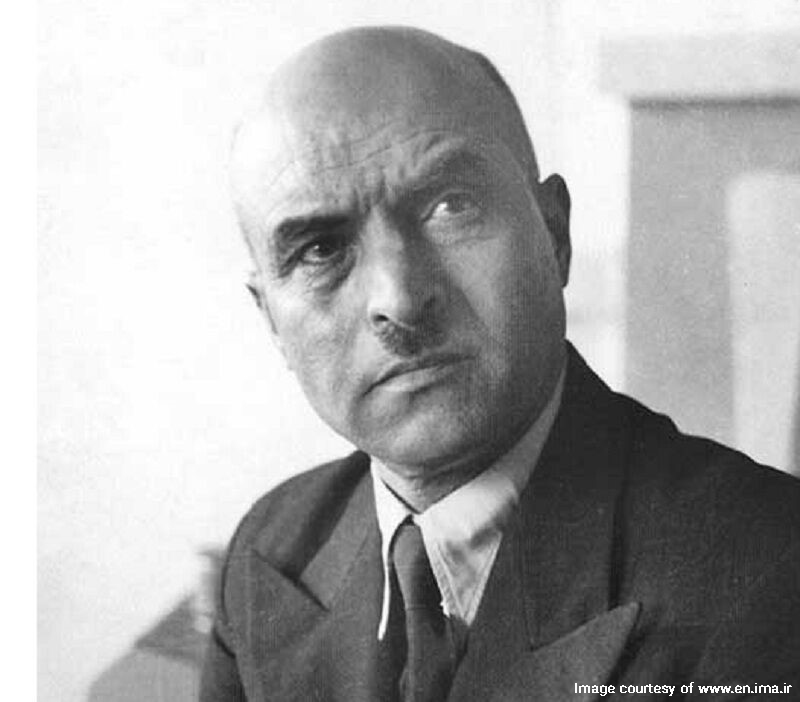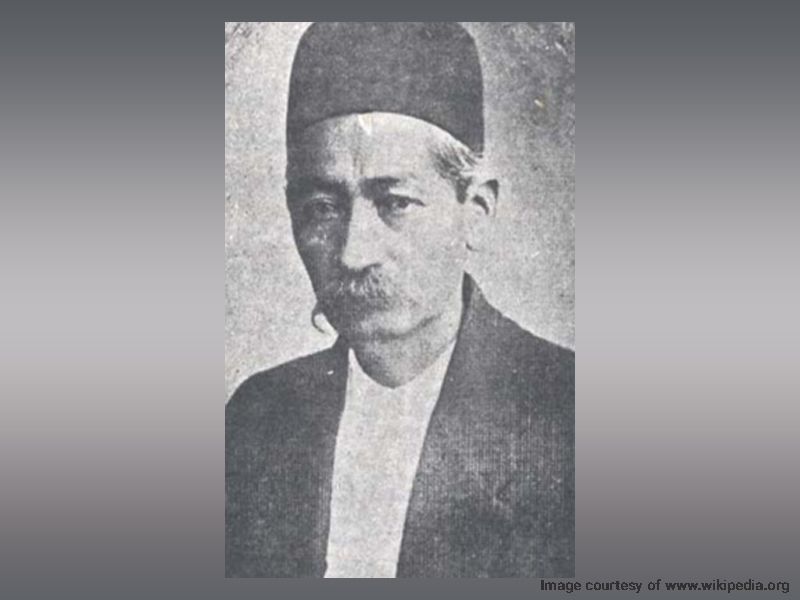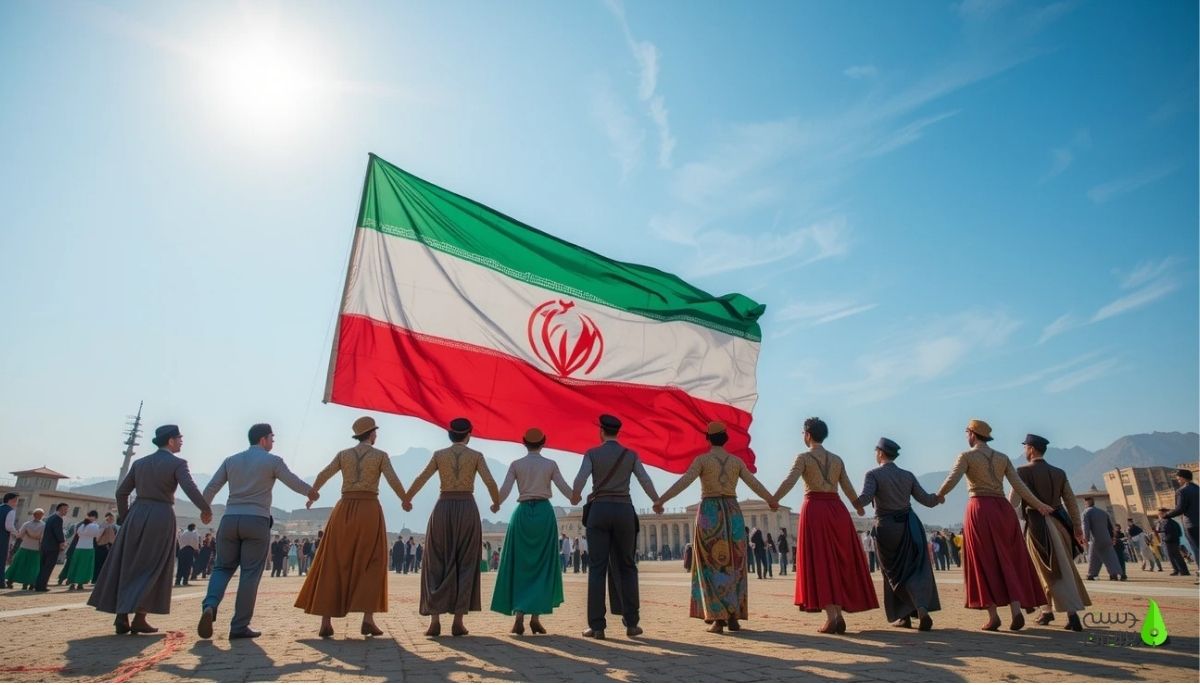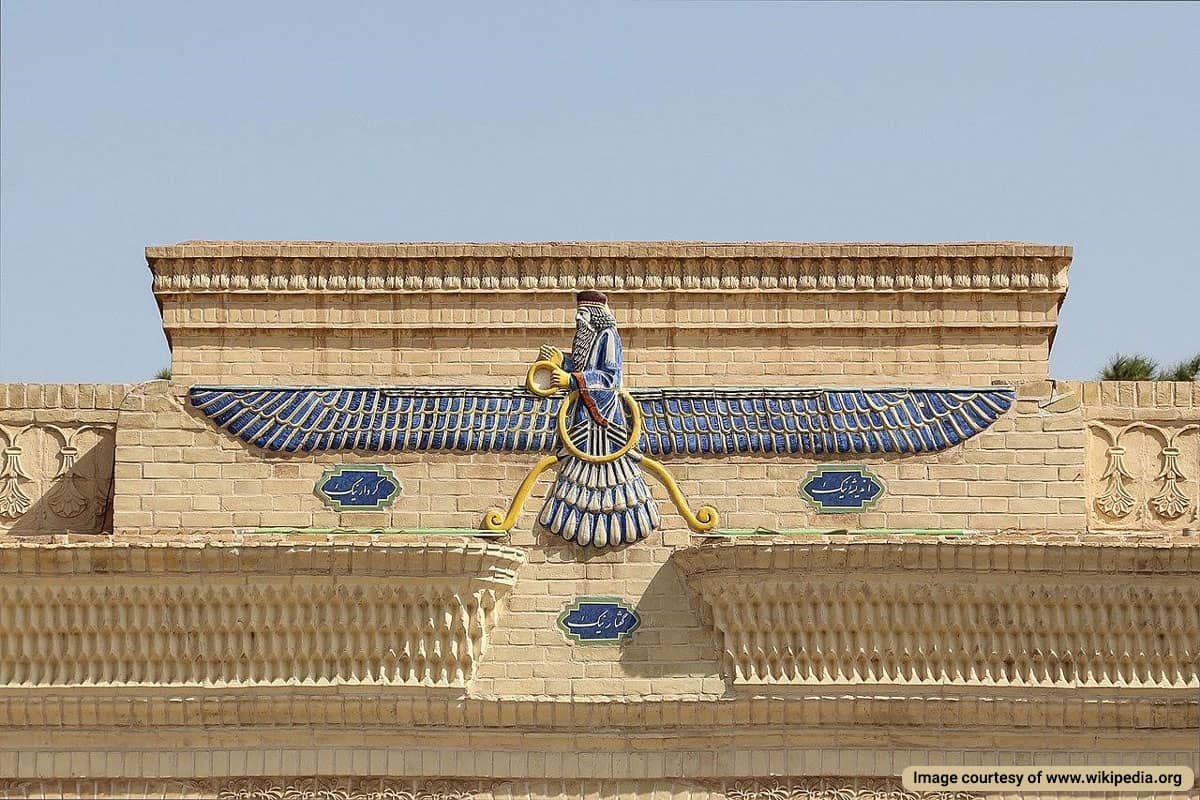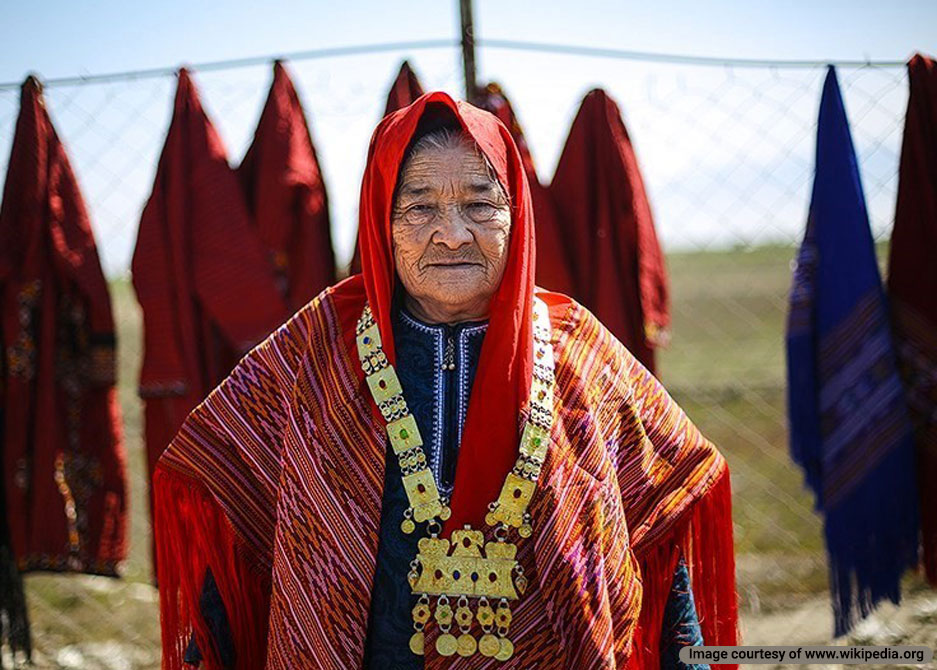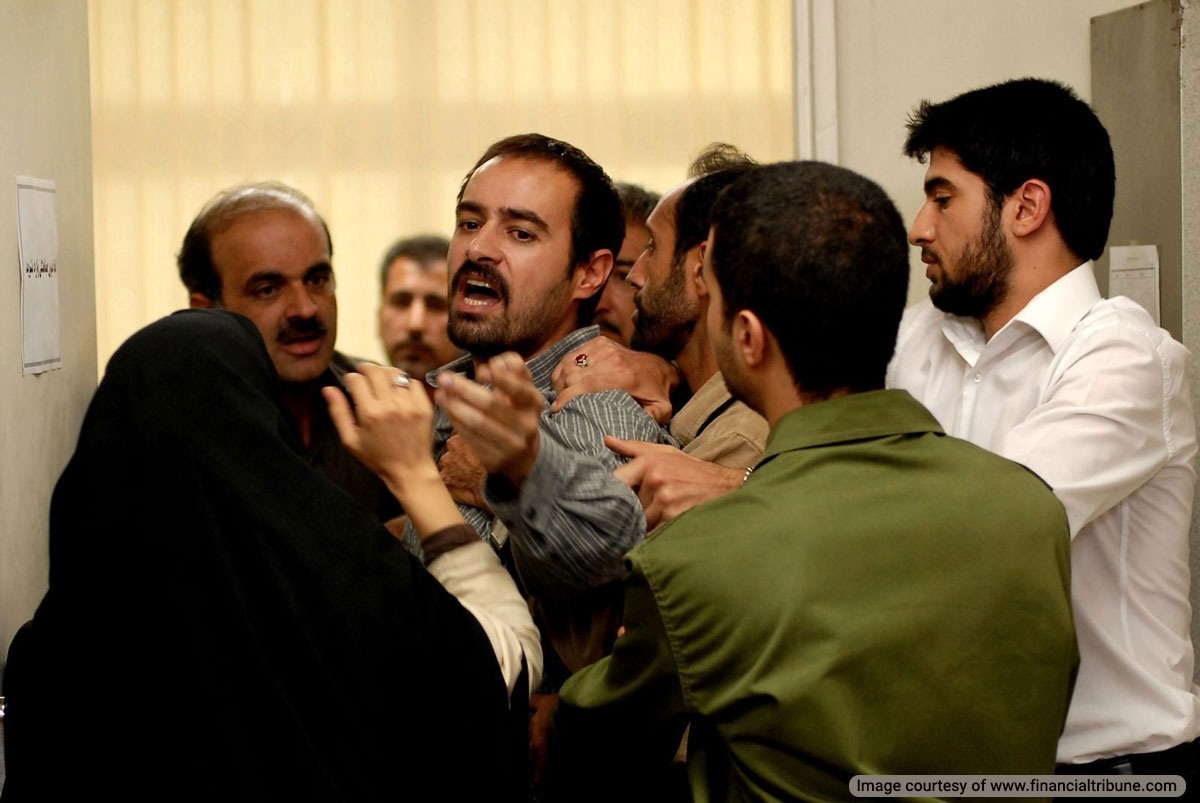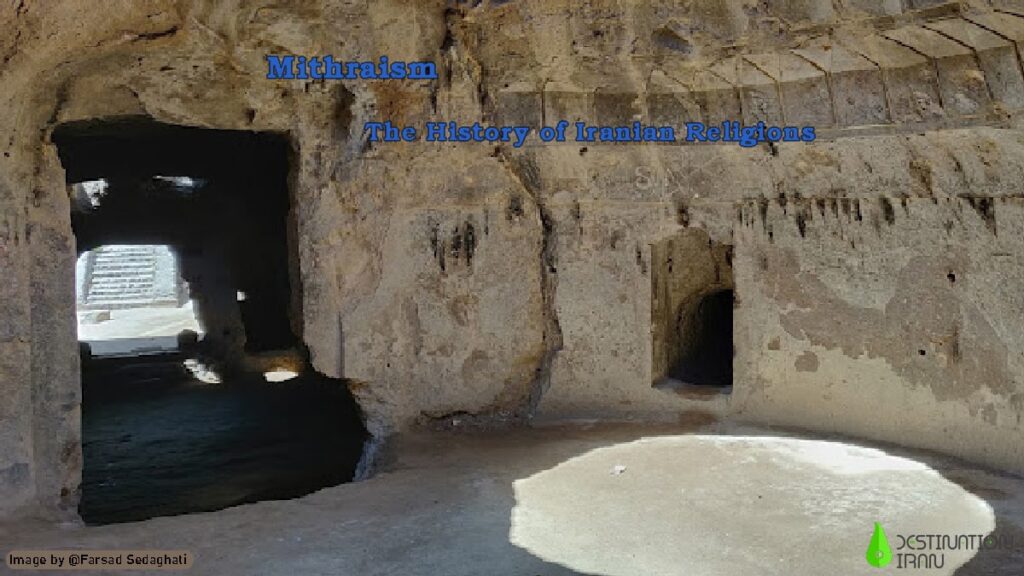
“Mithraism” or “Mithra Worship” is one of the ancient Iranian religions, which is centered around the worship of the god “Mehr” or “Mithra”. Before Zoroastrianism and until the end of the Sassanid period, Mithra was worshiped by the ancient Iranians as the deity of covenant, war, and light. The historical artifacts from these periods show that the ancient practice of Mithraism was common in Iran before the religion of Zoroastrianism.
What is Mithraism?
The ritual of Mithra worship, known among ancient Romans as “the Cult of Mithra” or “Mithraic Mysteries”, is the Roman interpretation of this religion. In the 2nd and 3rd centuries CE, Mithraism enjoyed worldwide popularity from India to Spain.
The Roman Mithras, the god of war, was a male figure always depicted carrying a dagger or a sword. Also, the followers of Mithras followed a complex seven-level system of honor in service of Mithras and banquets specific to this cult. In other words, this cult’s members gathered to meet in the temple of Mithras.
Mithraic ritualistic relics have been found in 420 different sites around the world. Among these relics, we can mention 1000 inscriptions and 700 depictions of Tauroctony, the sacrifice of the sacred bull by Mithra. Mithraism was highly popular among the Romans and until now about 680 temples of Mithras have been identified in the city of Rome alone.
What does Mithra Mean?
“Mitra” or “Mithra” is one of the ancient gods of Iran, mentioned in the Avesta which means “covenant and contract”. The name of this god has an Indo-Iranian origin and some of its characteristics are derived from “Shiva”, the Hindu god of love.
Mithra’s Birth
According to some mythologists, Mithra was born from the collision of two celestial stones. This mythological belief refers to the creation of fire from the collision of two celestial bodies. Another group considers the birth of this god a cosmic event.
What are the Principles of Mithraism?
Honesty and loyalty are the most important principles of Mithraism. One of the characteristics of this ancient ritual, which is also considered a military cult, is loyalty to the covenant. Therefore, a person who wanted to practice this ritual had to pass the initiation tests of honesty and loyalty first.
After that, they were sworn to secrecy and not to reveal the mysteries to anyone. Then, their forehead and hands were tattooed so that he would be considered a brother and ally of other Mithraists.
In another initiation test, the person’s eyes were covered and they were pushed forward. At this time, another Mithraist would embrace them as a savior and prevent them from falling. With this leap of faith, they evaluated the intensity of their belief.
Mithraism Beliefs and Traditions
There are different beliefs and traditions in Mithraism, which we discuss below:
Mithra’s Battle with the Sacred Bull
According to Mithraist beliefs, Mithra held the power to lift the sacred bull, throw it over his shoulder, and take it into the cave. In other narrations, he tames this bull, which is blue, and rides it into his cave.
Sacrificial Killing of Sacred Bull
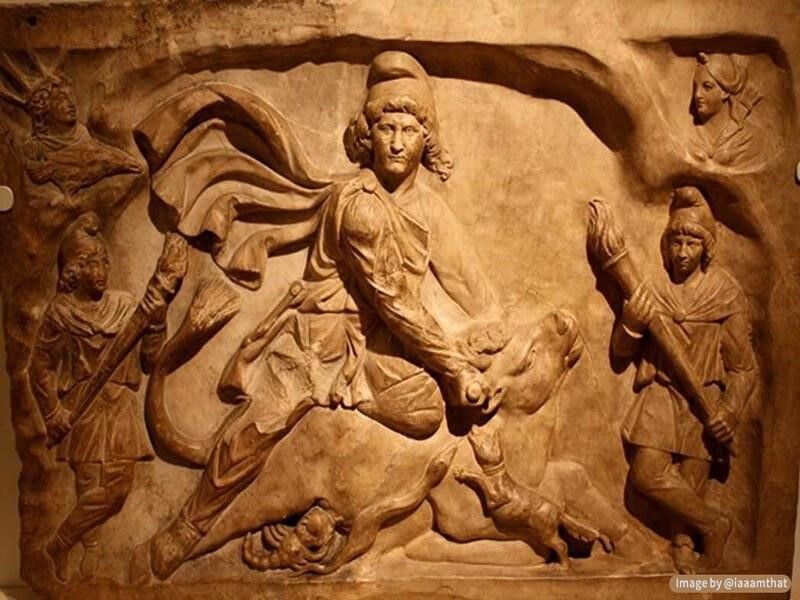
Upon entering the cave, Mithra slammed the bull down, sat on its back, and plunged his famous dagger into the bull’s heart. Three vine seedlings and three ears of wheat grew from the wound.
The Water of Eternal Life
According to the followers of this religion, when Mithra shoots his arrow at a rock, an eternal spring flows from that rock. The water of this spring is the water of eternal life.
Concept of Hunting in Mithraism
Mithraists believe he could bowhunt animals while galloping on a horse, without missing a single arrow. He has the same accuracy in dealing with his enemies. That’s why this ancient deity was given the nickname “Mehrenbarz” or “Invincible”.
Ascent of Mithra’s Chariot of the Sun
The followers of this religion believe that after the end of the banquet, Mithra rides the chariot of the sun and ascends to the heavens. He is still waiting to return to earth one day to reform humanity and purge impurity and evil.
Mithra is considered the savior of existence from the shackles of time. Like Shiva, the Hindu god, he will light a fire that engulfs the entire world and cleanses all impurities.
It should be mentioned that the Zoroastrian concept of “Saoshyant” (“Messiah”, “Masih” or “Mahdi” in other religions) originates in Mithraism. It seems that other religions also concluded that mankind needs a savior.
Judgment Day in Mithraic Mysteries
In this religion, Judgement Day is Mithra’s descent to purge the world of impurities and ignite fire. According to the followers of this ancient ritual, only the followers of Mithra will be exempt from the fire on the day of judgment.
Sacred Seven in Mithraism Beliefs
Most ancient religions believed in the sanctity of numbers, but in Mithraism, seven is considered a sacred number. In this religion, the earth has seven layers, the religion has seven ranks, and the world consists of seven planets.
The seven ranks of Roman Mithraism are as follows:
- Attributed to Mercury; the raven.
- Attributed to Venus; Nymphus (occult).
- Attributed to Mars; Miles (soldier).
- Attributed to Jupiter; Leo (lion).
- Attributed to the moon; Perses (Persian).
- Attributed to Sol (the Sun); called Heliodomus (the sun runner).
- Attributed to Saturn; Peter or Father.
According to this tradition, novice members would hold the first rank upon introduction to this deity. Then they climbed the ranks through the teachings of the priests.
Mithraic Symbols
Mithraism has two special symbols:
Intertwined Serpents
In this religion, the serpent is a symbol of health, and the green acacia timber is considered the symbol of honesty. The symbol of two serpents intertwined around acacia timber is one of the oldest symbols of Mithraism.
Mithra’s Cross (Chalipa)
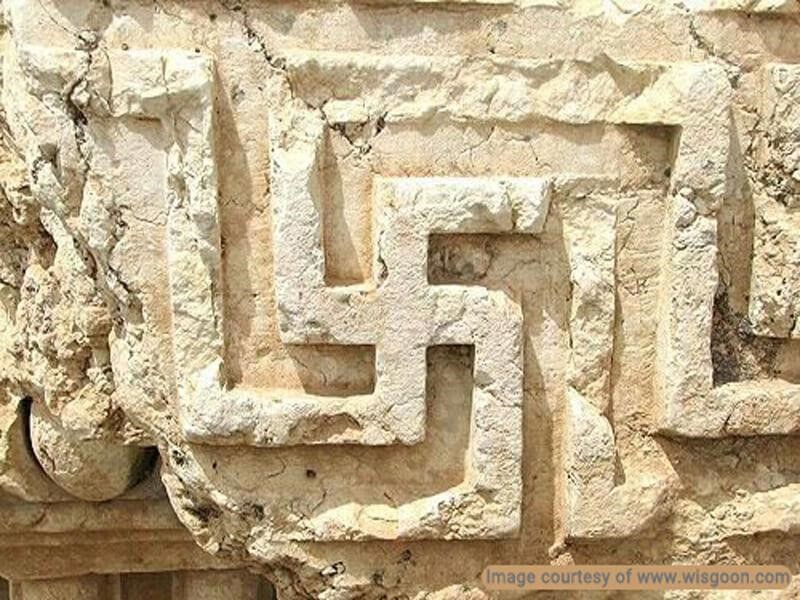
This symbol is present in the ancient religions of Egypt and India and is one of the most important symbols of Mithraism. According to some researchers and archaeologists, the Christian cross is a simplified version of the sun cross.
This symbol, also depicted in the form of sun rays or a five-pointed star, can also be seen on the helmet of Cyrus the Great. This design was the symbol of the Sun, which is known as the Star sign today.
In general, it can be said that the cross, Chalipa, four-bladed, and four-pointed are simplified designs of the shining sun. In another interpretation, this sign may be a symbol of the four seasons or the four elements of nature (water, wind, earth, fire).
What is a Mithraeum?
Mithraist temples are called Mithraeum or Mehrabeh. Usually, Mehrabah refers to a building that has one entrance, where an inner vestibule leads to three corridors. In Mithraeum, the main hall (in the middle) is always larger and has a higher ceiling than the two side halls.
In the main hall, stone benches are placed on the sides, and the light of the hall is provided by small openings in the ceiling. The walls of the prayer hall usually display images of Cautes and Cautopates, two torchbearers of the Mithraism of ancient Rome.
The stone architecture of Mithraeum is based on the mythological belief of the birth of Mithra from the heart of the stone. Also, these Mithraic shrines were located near mountains, old trees, natural springs, and wells.
Herodotus, the Greek historian, has written the following about Iranian temples:
“The Iranians did not build temples and prayed in the open. Over time, Chahartaqi (four-arched structures) were erected near rocks, caves, mountains, springs, and trees, which are still revered shelters and safe havens for the needy.”
In architectural terms, Mithraeums are divided into two categories:
Cave Temples
Cave temples are built inside natural caves or man-made caves (hand-dug). These temples are often built in the heart of mountains and in mountainous regions.
Chahartaq Temples
Chahartaq or Chartaqi temples are four arched buildings. In Chartagi temples, the said building has four columns and is covered by a dome.
History of Mithraism in Iran
Based on the discovered evidence regarding the history of Mithraism in Iran, this religion had followers in Iran long before Zoroastrianism. However, the exact date of its establishment is unknown. According to Arthur Christensen, the Danish scholar specializing in Iranian mythology, before the separation of the Indo-Iranian tribes, there was a major difference between their main gods:
A group of gods were called “Deva” and “Indra” was the king of these deities. Another group of gods was “Asura” (“Ahura” in Persian) and the strongest of them were “Varuna” and “Mithra”. The worshipers sang “Yashts” (hymns) in praise of Mithra and the associated deities. A number of these Yashts are still preserved in the new section of Avesta, the Book of Zoroastrianism.
Mithraism was common among Iranian people before the Zoroastrian religion. In ancient Iran, Iranians had polytheistic religions, and Mithra was considered the most admired god of the people.
Polytheism means believing in the existence of several superhuman forces in nature. Polytheism has existed in the mythology of most of the ancient cultures of the world, and today some Hindu sects and the Aztecs still believe in the existence of multiple lords of nature.
Mithraism in the Achaemenid Period
Cyrus the Great and his successors did not seek to impose strict religious laws and did not intend to change the beliefs popular among nobles and the common people. For this reason, during the Achaemenid era, Zoroastrianism adopted ancient polytheistic concepts, and in this way, hymns were dedicated to Mithra known as “Mehr Yasht”.
Of course, in this combined religion of the late Achaemenid period, the dominance of Zoroastrian beliefs over polytheistic aspects is evident. Therefore, there is no mention of “sacrifice rituals” that the Zoroastrians disliked.
Mithraism in the Parthian and Sassanid Periods
Since this religion was very compatible with the fighting spirit of the Parthians, it was very popular during this period. Following this surge in popularity, Mithraism spread to Europe.
Regarding the Sassanid period, there is no evidence of the history of Mithraism in Iran before the reign of Artaxerxes II. While during the time of Artaxerxes III, he ordered the inscription of this writing on the wall of the northern side of the palace in Persepolis:
“May the gods Anahita and Mithra prolong me and this country and what I have built”.
In addition, belief in Mithra and Mithraic rituals during the time of the Sassanid kings is evident in the reliefs of Taq-e Bostan and Naqsh-e Rostam. In the Taq-e Bostan relief, we can see the envoy of Ahura Mazda, and Mithra to the right of Shapur II, performing the coronation ceremony.
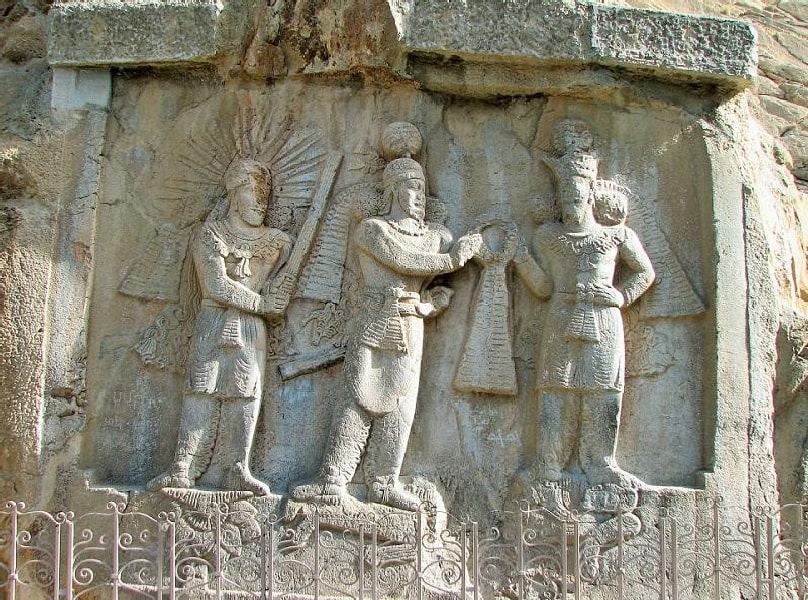
Mithraism in Ancient Rome
As mentioned earlier, Mithra is known as “Mithras” in Latin. Contrary to its meaning in Avesta, this name means “mediator” in Greco-Roman Mithraism. Plutarch, the Greek historian, on the topic of dualist theology of the first century, explains Zoroastrianism as follows:
“Mithra is the mediator between Ahura Mazda and Angra Mainyu… and that is why people of Iranian descent call him “Mithra the Mediator”.
One of the impacts of believing in the doctrines of Mithraism was creating unity and brotherhood among people, establishing order, and attention to moral values among Mithra followers. These characteristics of Iranian Mithraists interested the Romans and after some time many Romans were attracted to Mithraism.
Regarding the spread of Mithraism in Rome, based on historical evidence, Nero, the Roman emperor, converted to this religion in 66 AD. In a short time, Mithraism gained many followers in Central Europe. The followers of Mithras in Europe grew in numbers until it reached its peak in the 3rd century, during the reign of the Roman emperor Caracalla.
Another Roman emperor was “Aurelianus” who declared Mithraism as the official religion. After that, Mithraism was considered the official religion of the Roman Empire for three centuries. This popularity continued until the middle of the 4th century and the beginning of the war between Eastern and Western Rome.
After the war between the two Roman Empires, Constantine, the emperor of Eastern Rome, sought to distinguish himself from Western Rome by changing the official religion. Through his actions, Christianity was declared the official religion first in Eastern Rome, and then in the entire Roman Empire.
In the following years, attempts were made to restore Mithraism in Rome, but these efforts were not effective, and Mithraism was gradually forgotten.
Mithraism and Christianity
According to many scholars, Roman Mithraism has many similarities with Abrahamic monotheism based on the teachings of Christ. According to them, the main framework of Christianity is developed based on pre-Christian religions, especially Mithraism.
In the early centuries after the birth of Christ, Mithras was considered the promoter of salvation and the bringer of the way of life, a powerful competitor to Christianity.
Perhaps it was due to the simultaneous spread of these two religions in the same geographical area that Mithra’s birthday on the 25th of December is also considered the birthday of Christ.
On the other hand, certain rites in Christianity are considered derived from Mithraism. Rituals such as:
- The birth of Christ from a virgin mother
- Holding the Ascension ceremony
- Infant baptism rituals
- Belief in the Last Supper
- Holding the Eucharist or Holy Communion
- Honoring Sunday
Famous Mithraism Temples in Iran
Following Mithraism beliefs, the Sassanids built many temples for Mithra (the god of fire) during their reign. A number of these prominent temples were located in the city of Takht-e Soleyman or “Ganjak”. With the invasion of Heraclius, the emperor of the Byzantine Empire, in the 7th century AD, many of these Mithraic temples were set on fire.
It should be noted that most Mithraic temples in Iran and the world were converted into fire temples and churches after the emergence of Zoroastrianism and then Christianity. Also, changes were made in some of the Mithraic temples during the rule of the Ilkhanids to express Islamic architectural elements.
As it was said before, the temples were in two forms, cave temples and Chahartaq temples. Today, there is no precise information about the exact number of Mithra temples in Iran. However, based on the architectural characteristics of historical buildings, some sites are classified as Mithra temples.
Below are some of these items:
- Imamzadeh Zubaidah Khatun in Naraq city, Markazi Province
- Qadamgah Historical Monument in Razavi Khorasan Province
- Imamzadeh Saleh in Tehran
- Taq-e Bostan site and surrounding caves in Kermanshah feature the relief of Mithra.
- The cellar or the basement of the Qazvin mosque, whose southern wing is known as the fire temple.
- Imamzadeh Hamza on Abali road
- An area similar to Mithraism Temples in Niyasar Kashan
Some of the prominent Mithraism Temples that remain in Iran are:
Adur Gushnasp Fire Temple in West Azerbaijan
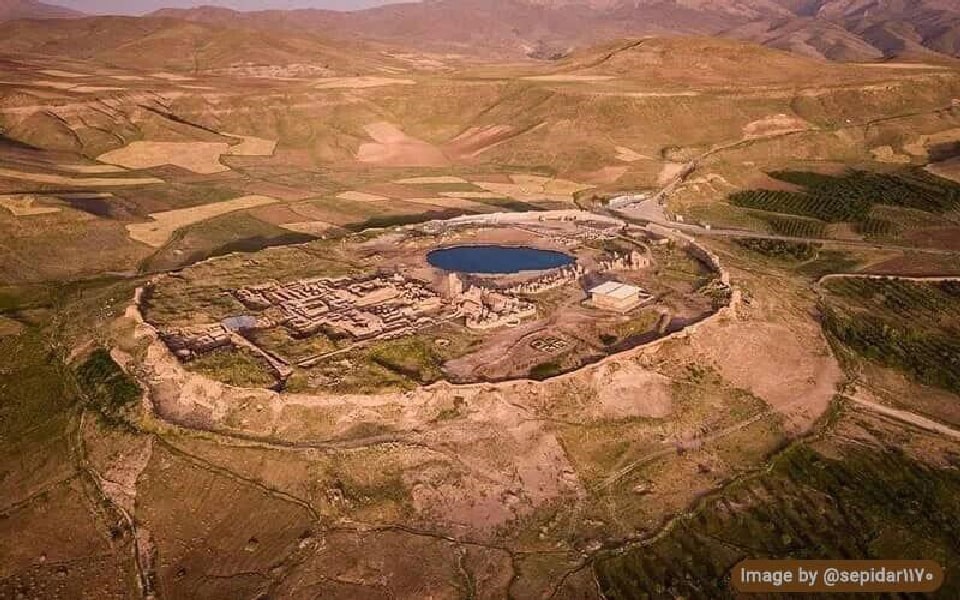
Adur Gushnasp or Azargoshasp Fire Temple is one of the three major fire temples that were built during the Sassanid period. Later, this temple became a Zoroastrian fire temple and it is still known by the same name today. This fire temple belonged to kings and the warrior social class.
Mehr Temple in Maragheh
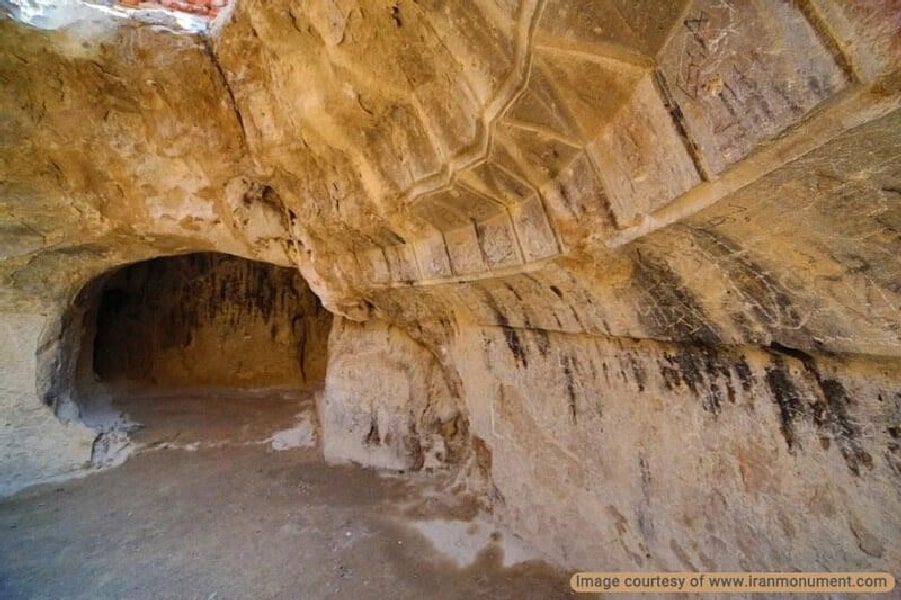
Another prominent Mithraism temple in Iran is the Mehr Temple of Maragheh which is considered one of the first temples in Iran and an ancient human settlement site. This Mithraic temple is located in the city of Maragheh and the south of Varjavi village and is currently also known as The Imamzadeh Masoom of Varjovi, Maragheh.
Maragheh Mehr Temple is located under a historical graveyard, parts of which were revealed in archeological excavations. Parts of this underground rock temple belonging to the Parthian period have been destroyed over time.
After the establishment of Ilkhanid rule, Abaqa Khan, the descendant of Holagu Khan, restored this building for the first time. Then, by his order, they built a large mosque on the ruins of Mehr temples in Maragheh city.
This temple was added to the National Heritage List of Iran in 1978. Of course, today there are few traces of this historical building and it is nearly destroyed. Ineffective restorations by the cultural heritage organization and theft of parts of the graveyard by looters are among the causes of this destruction.
Qadamgah Mithra Temple in Badamiar Village
The 12,000-year-old Qadamgaq temple is considered one of the most prominent Mithraism temples in Iran. This historical temple was built in the heart of the mountain.
The Qadamgah Temple is also known as “Badamyar Temple”, derived from the name of the village where it is located. This ancient temple is located in Azarshahr, 40 kilometers southwest of Tabriz city.
According to most archaeologists, the Qadhamgah Temple belongs to the prehistoric period. This temple was later converted into a fire temple, and in the post-Islam period, an altar was built inside and it was converted into a mosque. The altar of this historical building is made in the form of a suspended Moqarnass work which belongs to the Safavid period.
Next to this dome-shaped temple is the historical graveyard of Azarshahr, located on a hill. In this graveyard, there are stone inscriptions in Kufic and Thuluth script, sculptures, and various historical artifacts.
Today, some residents of the neighboring villages of Badamyar village hold their religious ceremonies in this historical place. The historical temple of Gadhamgah was registered in the Iran National Heritage List in 1968.
Mehr Ardeshir Fire Temple
Mehr Ardeshir Fire Temple is one of the Mithra temples built in the Sassanid period in the city of Ardestan in Isfahan province. Ard means holy, pure, and bright, and the suffix Stan means it is a place.
In this way, the name Ardestan refers to a holy place or a pure and bright place. It seems that this city was named because of its famous fire temple.
According to the historical narrative, this Mithraic temple was built by Bahman, the son of Esfandiar. This Sassanid king, who was also known as “Bahman-e Ardeshir”, built three fire temples in one day in the east, middle, and west (from sunrise to sunset).
These fire temples are:
- In the east, the “Shahr-e Ardeshir” temple is adjacent to “Mehrbin or Marin Castle”.
- In the middle, the “Zarvan-e Ardeshir” temple in an ancient village called “Darak Barkhor” on the outskirts of Isfahan city.
- In the west, the “Mehr Ardeshir” temple in Ardestan city.
It is worth mentioning that the Mehr Ardeshir temple was located in a fortress called “Aruneh”, which is known today as “Bagh Qal’eh” (castle garden). Over time and with the spread of Zoroastrianism among the Sassanids, the name of this Mehr temple was changed to “Mehrardshir Fire Temple”.
This historical building was converted to a mosque when Islam arrived in Iran. Today, this Mithraic temple hosts many tourists as a unique tourist attraction.
Adur Burzen-Mihr Fire Temple
This fire temple, which is one of the temples of Mithraism, is located on a mountain between the cities of Shahrud and Sabzevar. This temple, which is known among local people as “Div’s House” or “Div’s Chahartaqi”, is considered one of the three mythological Zoroastrian fire temples.
Azarakhsh Fire Temple
Azarakhsh Fire Temple is one of the Mithraic temples located in the south of Darab city. According to some researchers, this Mithraism temple was converted to a fire temple in the Sassanid era. This historic temple, which was built by hand, is known today as “Stone Mosque ”.
Kamar Zard Mithraism Temple
“Kamar Zard” temple, which is located on the Kamar Zard mountain in Kermanshah province, is another Mithraic temple in Iran. Kamar Zard temple in Kermanshah, like other Mithraic temples, features beautiful corridors that were used by the followers of Mithra to pray.
Mithraism Burial Rituals and Traditions
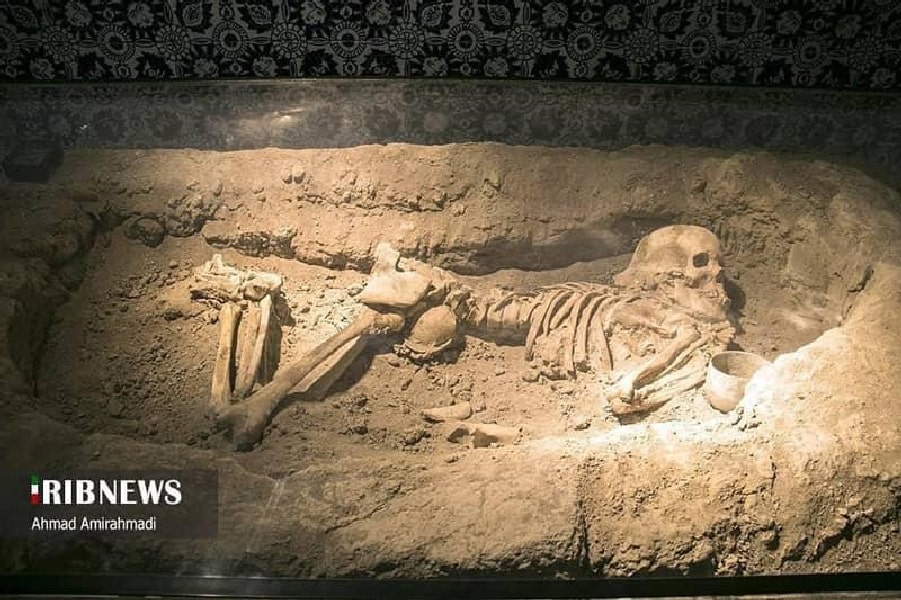
As mentioned, Mithraism had many followers during the Parthian period. Based on the remains of graveyards left from this era, archaeologists have found certain features in Mithraic burial rituals.
During the Parthian period, burials were often carried out in the form of “Jar Burials” or “Pit Burials”. The reason for using the burial jars was to prevent contamination of the surrounding soil or in recognition of the social class of the deceased.
In the eastern part of the Parthian territories, in places such as “Nasa” and “Saghd”, clay cylindrical jars were used to bury the dead. According to the excavations carried out by Russian archaeologists, in the west of the Parthian territories, the bodies were also buried in the walls and floors of the house. Next to the bodies, they found everyday objects that were used by the deceased.
In another form of burial ritual, the body of the deceased was placed in a position with the head towards the north and the feet towards the south. In addition, according to the time of burial, the face of the dead was placed towards the east, where the sun rises in the morning, or towards the center of the sky at noon.
They rarely buried the deceased facing the west and the setting sun. Archaeologists discovered the skeleton of a Parthian woman in the north of Ashraf Historical Hill in Isfahan, whose face is turned to the east and on her left shoulder.
Learn More About Ancient Iranian Religions and Culture
According to historical evidence, Mithraism in Iran has an extensive history. Signs of the teachings and rituals of this ancient religion can be observed in later religions. Learning about Iranian religions can provide a deeper insight into modern beliefs. In this regard, Destination Iran aims to promote cultural heritage tourism as part of Iran’s intangible cultural heritage. We invite you to visit ancient Iranian tourist attractions to learn more about Iran’s ancient culture and religions.






